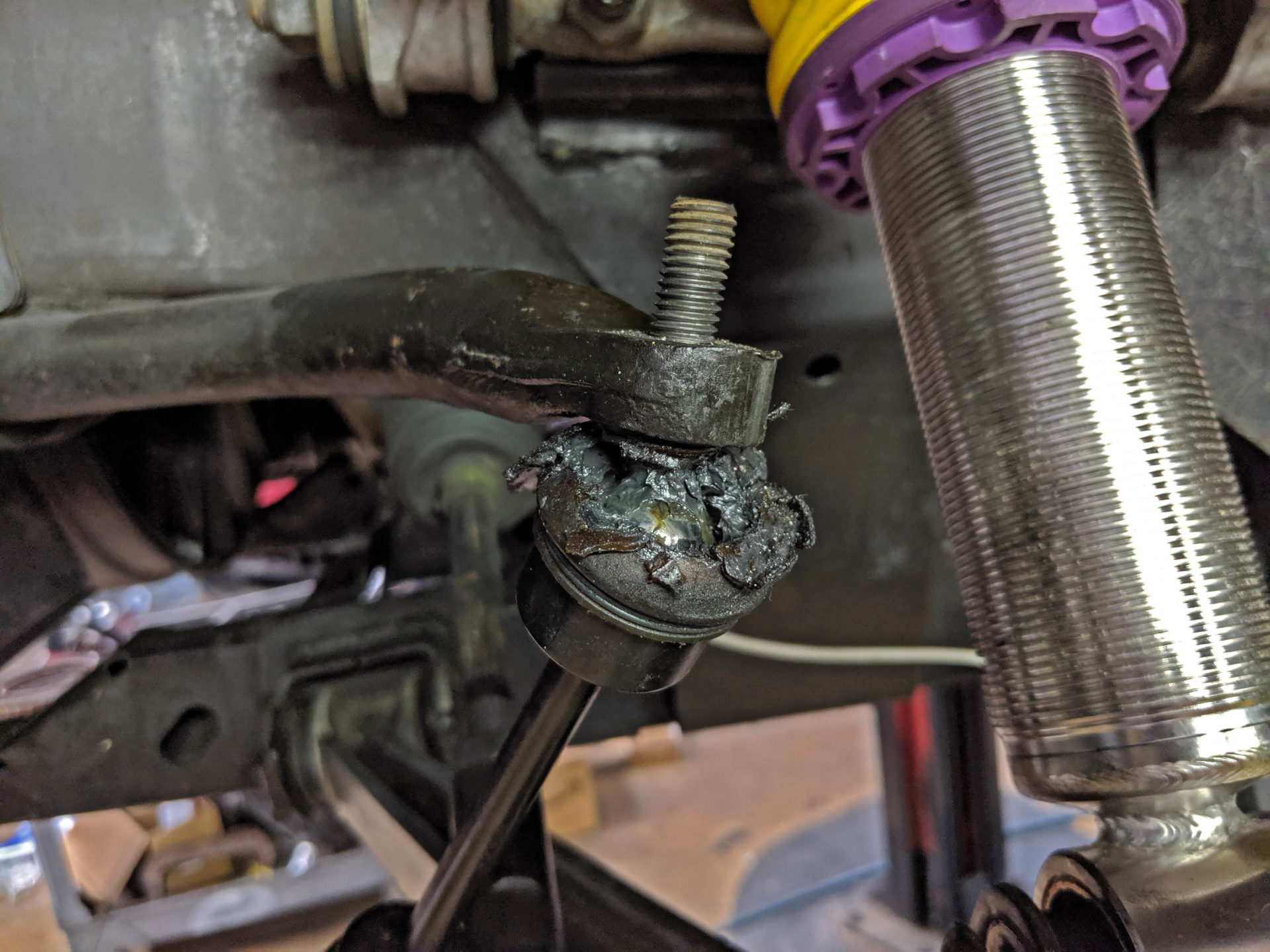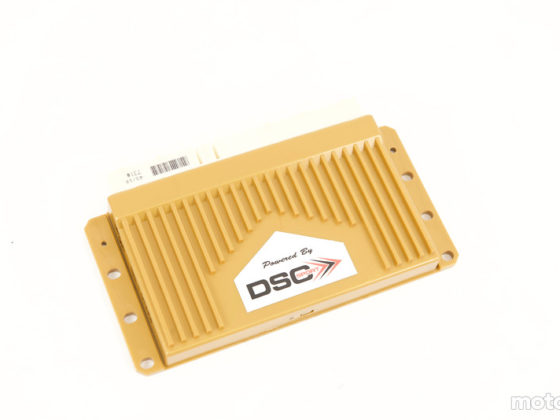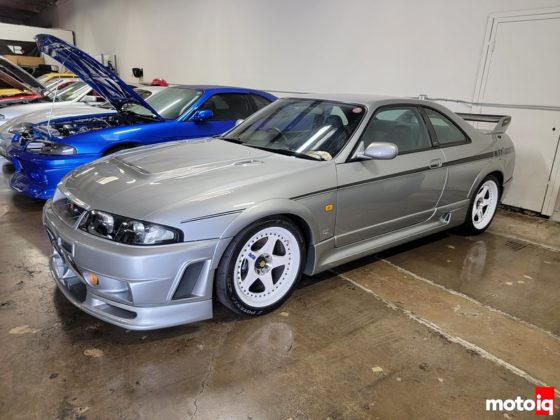Time takes its toll on rubber. We replace the old and hardened swaybar bushings, ball joints, and boots on our low-mileage 1997 Viper.
As we mentioned in Part 12, it’s not just mileage but age that affects fluids and rubber components in a car. Our Viper has less than 10,000 miles and most of the rubber bushings in the car are completely shot.
 The front swaybar endlink boot is completely destroyed from age alone. This car has lived in a climate-controlled environment and has not seen high brake temps from any track use.
The front swaybar endlink boot is completely destroyed from age alone. This car has lived in a climate-controlled environment and has not seen high brake temps from any track use.
 The lower swaybar end link is equally as destroyed. The lower control arm outer ball joint boot is also cracked and leaking grease.
The lower swaybar end link is equally as destroyed. The lower control arm outer ball joint boot is also cracked and leaking grease.
 The boots in the tie-rod ends are also cracked completely though.
The boots in the tie-rod ends are also cracked completely though.
 To replace all of these components, we removed the brake rotor and caliper, then the tie rod end.
To replace all of these components, we removed the brake rotor and caliper, then the tie rod end.
 Next, we needed to remove the upright/knuckle itself. We loosened the upper control arm ball joint nut, then used a pickle-fork to remove the ball joint from the upright. We did the same for the lower control arm ball joint.
Next, we needed to remove the upright/knuckle itself. We loosened the upper control arm ball joint nut, then used a pickle-fork to remove the ball joint from the upright. We did the same for the lower control arm ball joint.




9 comments
I absolutely love the Viper project. Keep them coming!
Thank you for the comment. Glad to hear you are enjoying the project. Stay tuned!
Yooo finally a update, Viper Project got me woke on how based Vipers are.
They are badass big Miatas with torque.
Amazing how much new sway bar bushings and links can improve limit handling and on center feel. Especially on old cars that get driven hard!
Absolutely!
Is NanoPro MT Marine Grease safe to use on rubber? I’m not the best with grease chemistry, but my understanding is if it’s petroleum based, you shouldn’t be using it on rubber.
Great article and a good reminder to people that time take its toll on cars, even if they’re hardly driven.
Yes it is perfectly safe to use on rubber.
I love these posts on the viper, it helps a lot first time owners like myself. Thanks